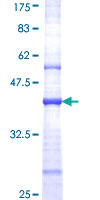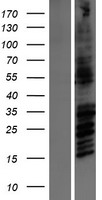order histories, retained contact details for faster checkout, review submissions, and special promotions.
Forgot password?
order histories, retained contact details for faster checkout, review submissions, and special promotions.
Location
Corporate Headquarters
Vector Laboratories, Inc.
6737 Mowry Ave
Newark, CA 94560
United States
Telephone Numbers
Customer Service: (800) 227-6666 / (650) 697-3600
Contact Us
Additional Contact Details
order histories, retained contact details for faster checkout, review submissions, and special promotions.
Forgot password?
order histories, retained contact details for faster checkout, review submissions, and special promotions.
GRIN2B / NMDAR2B / NR2B
glutamate receptor, ionotropic, N-methyl D-aspartate 2B
N-methyl-D-aspartate (NMDA) receptors are a class of ionotropic glutamate receptors. NMDA receptor channel has been shown to be involved in long-term potentiation, an activity-dependent increase in the efficiency of synaptic transmission thought to underlie certain kinds of memory and learning. NMDA receptor channels are heteromers composed of the key receptor subunit NMDAR1 (GRIN1) and 1 or more of the 4 NMDAR2 subunits: NMDAR2A (GRIN2A), NMDAR2B (GRIN2B), NMDAR2C (GRIN2C), and NMDAR2D (GRIN2D). GRIN2B may be a candidate gene for the neurodegenerative disorder dentato-rubro-pallidoluysian atrophy (DRPLA). Overexpression of the NR2B subunit of the receptor has been associated with increases in learning and memory while aged; memory impaired animals have deficiencies in NR2B expression. Tyr1472 on NR2B is phosphorylated and this may lead to the increased expression of the NMDAR at the synapse that plays a role in synaptic plasticity.
| Gene Name: | glutamate receptor, ionotropic, N-methyl D-aspartate 2B |
| Family/Subfamily: | Ion Channel , Glutamate receptor - ionotropic (NMDA receptor) |
| Synonyms: | GRIN2B, GluN2B, GluR epsilon 2, NMDA receptor 2B, NMDAR2B, NR2B, NR3, MRD6, HNR3 |
| Target Sequences: | NM_000834 NP_000825.2 Q13224 |
Publications (1)




If you do not find the reagent or information you require, please contact Customer.Support@LSBio.com to inquire about additional products in development.










